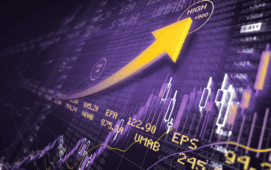The difficulties of making high-frequency trading profitable – or its absolute importance — may be exaggerated, and automating trading may be more useful than industry observers would think, according to trading operations executives who spoke in a panel discussion on “Trading in the New Normal Environment,” at the Intelligent Trading Summit held in New York this month.
“Times are harder now, which has to do with costs, specifically exchange costs, but the mergers and acquisitions we see now are not a sign of weakness,” said Bill Harts, CEO of the Modern Markets Initiative, an association of high-frequency electronic trading firms. “It’s a sign of consolidation in the industry. Smart operators are rolling up weaker operators, because they want to extend the algorithms and their capital to more customers and asset classes.”
To differentiate itself, Citi has analytics components on its back end, according to Andrew Keane, global head, listed derivatives algo trading, in the futures and OTC learning unit of Citi. “We have different components especially around algorithms that are focused on best execution,” he said. “Through a lot of our analytics packages, and all the work we’ve done on our algorithmic offering, we created a best execution solution.”
At the same time, regulations are requiring more of traders. To respond, their firms have to “manage and optimise the management of infrastructure as best they can to minimise the number of personnel they need to manage that complex infrastructure,” said David Winig, managing director, head of market data services and electronic trading infrastructure at JPMorgan Chase.
Citi’s futures and options business reduced the number of futures commission merchants it works with, according to Keane. “A couple of years ago, we leveraged third-party providers to create a best-in-breed solution, to not rely on old technology from the bank,” he said. “It helped us grow our business and invest widely without the huge overhead of running electronic trading for an options business, which is substantial.”
While automation does compress rates to pennies per execution, Keane explained, everyone can ask if “they really need to be high-frequency. Being best in breed in direct market access FIX infrastructure won’t be faster than high-frequency,” he said.
Participants in the trading ecosystem – banks, high-frequency traders and exchanges – “constantly think about costs,” said Harts, but they must decide if a one-microsecond improvement is worth the cost. “Every dollar spent on connecting to exchanges at high speed is a dollar less for investors,” he said. “For overall market structure, that’s bad and we should think hard about that.” Any increase in costs for market makers will widen spreads, Harts added.
Subscribe to our newsletter




